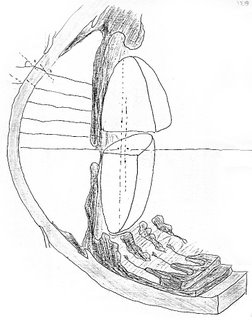Copyright © 2006 danwaniek.org
We cannot study a knowledgeable field, empirically as it is defined and limited as we choose it to be, without an external warrant of its logical coherence. Beyond this fundamental limit of any formalized approach - so aptly described by Kurt Goedel - almost any other educated attempt to enhance our understanding will shape both our vision and the detail of its applied exercise.
It so happened that my contemplation once encompassed the iris. Such a delicately colored membrane, so conspicuously present in our own eyes, pushed the limits of my perception just one small but decisive step further, and beyond medical studies. The images of irides were first beheld in the course of my medical endeavor as a countryside family doctor. But their delicate detail, especially the fine structures of these membranes were - certainly - not only beauty in the beholder's eyes.

So much truth was in the relationship developed between us that I also grew along these contemplated gems. And I developed my understanding along the lines of similarities between structures of the living and those of the myths and other synthetic forms of ancient knowledge. This idea was operationally named "cardinality" and developed elsewhere. Here I was reaching the point where everything I happened to study was also touched by an idea of beauty.
 Everything looked as if something marvellous was always happening and somebody was somewhere around. In fact, and all along the knowledgeable journey, I was never alone anymore. Not only did I lose an old sentiment of loneliness, but some new and in fact irresistible urge developed in my heart : I tried to describe that beauty. My only caveat henceforth, and eversince, was to proceed systematically. The articles and books in this knowldgeable field were all written as a consequence, practically almost as if by themselves.
Everything looked as if something marvellous was always happening and somebody was somewhere around. In fact, and all along the knowledgeable journey, I was never alone anymore. Not only did I lose an old sentiment of loneliness, but some new and in fact irresistible urge developed in my heart : I tried to describe that beauty. My only caveat henceforth, and eversince, was to proceed systematically. The articles and books in this knowldgeable field were all written as a consequence, practically almost as if by themselves.Alas, I am aware of the hopeless relativity of my approach and the odd choice of such a delicate enterprise. However, living enough to see it carried through, I can only point to the peace of mind it brought to me, where it mattered most – inside the contemplation process.



